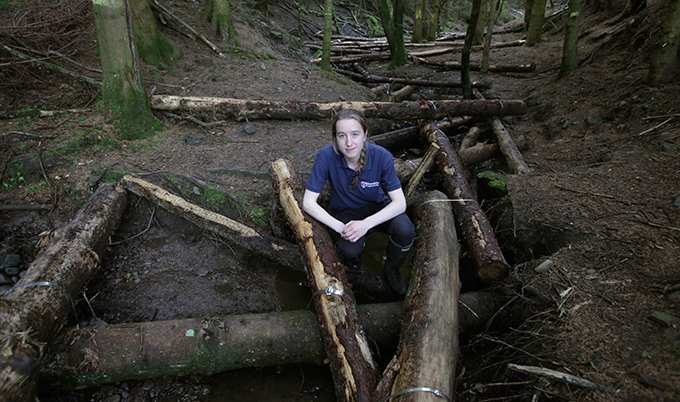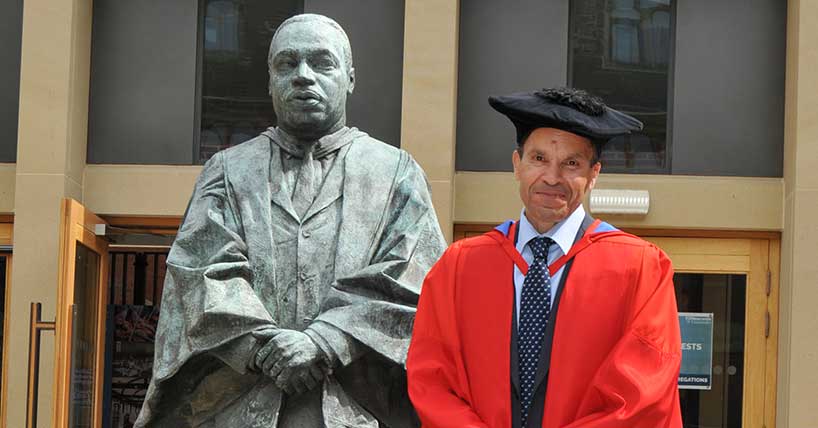community flood monitoring
Communities can fill the gaps on flooding
Published on: 12 April 2017
Flood-hit communities are the best placed to collect information about flash flooding which might otherwise be underestimated or missed altogether, scientists at Newcastle University say.
Community monitoring
The team from Newcastle carried out a study with residents of Haltwhistle, Northumberland. Running alongside a traditional monitoring network of rain gauges and water level recorders, the community observation scheme involved local residents, landowners, volunteers from the Haltwhistle Burn River Watch Group, and even passers-by, actively recording rainfall, river levels and flooding incidents in the town. At the start of the project, the volunteers were given training on making observations and recording data, and shared these through social media, a dedicated website and at workshops.
The data was then used by researchers and compared against data from the network of gauges over the same period of time.
Looking at one event in particular, which was an intense but short-lived rainstorm localised over Haltwhistle, the research team found that both the traditional gauges and rainfall radar gave much lower rainfall totals than the data collected by local residents, despite being just a few miles away.
Published in the Journal of Hydrology, the study is one of the first assessments which uses community-based observations as part of an actual catchment modelling exercise.
Eleanor Starkey, who led the research, explained: “Good quality monitoring is needed to create and improve models that can be used to predict how flooding might affect particular locations, but accurate data about the nature and frequency of flash flooding is hard to gather for many parts of the UK due to the short-lived nature of this type of flooding.
“Our results show that people living in communities directly affected by localised flash flooding can help to fill these information gaps and play a really important part in collecting this data.
“What’s great about this ‘citizen science’ approach is that it isn’t just about the data collection. It offers the public an exciting opportunity to work alongside scientists, share valuable local knowledge and help foster a greater sense of community.”

Supporting flood management plans
In recent years, Haltwhistle has experienced a number of flash floods including most recently during Storm Desmond. The information provided by the local community has the potential to support both short term measures to deal with flash flooding, and longer term flood risk management plans. It could be used, for example, to develop flood forecasting models that can be used by local authorities, Environment Agency, Fire and Rescue Services and other stakeholders to prepare for intense rainfall in the future.
The study took place as part of a larger project led by Tyne Rivers Trust and funded by the Natural Environment Research Council, DEFRA and the Environment Agency to improve water quality in the Haltwhistle Burn catchment area.
This involved the installation of a water quality improvement scheme at Slaty Sike, a tributary of Haltwhistle Burn. Inspired by the childhood game Kerplunk and made up of a combination of storage ponds and a 60m ‘ladder’ of criss-crossing logs carefully pinned into the banks of Slaty Sike, the scheme – the largest of its kind in the UK – is designed to slow the flow of rainfall and prevent debris and stones being washed downstream just like the marbles in a game of Kerplunk.
Susan Mackirdy, Director of Tyne Rivers Trust, said: “This research helps us to better understand the river and result in better management of similar tributaries. It is fantastic to see high quality ‘citizen science’ projects like this, we rely upon volunteers to help us with a variety of tasks and it is great to involve local people in research like this.”
Real-time 'citizen science'
Experts at Newcastle University are now using some of the key findings from the Haltwhistle project and building on them for another community-led monitoring scheme in Glenridding, within the Lake District National Park. The village was severely hit by Storms Desmond, Eva and Frank in 2015 when flooding and landslides blocked roads and cut off communications.
Researchers will create a real-time monitoring system using a combination of fixed cameras and direct observations made by members of the Glenridding community – who will record and share information using a dedicated website and through social media to get a live, ‘on the ground’ picture of how rainfall is affecting the area. Over time, the information gathered will be used to develop early warning models that can be used by the local community, emergency services and other agencies.
Dr Geoff Parkin, Senior Lecturer in Hydrology, Newcastle University, said: “Scientists and engineers should include this kind of ‘citizen science’ data into their work to get a full picture of the impact of flash flooding. Community-based observations are less complex, significantly cheaper and less demanding yet our results show how effective and valuable they can be when they are used alongside traditional sources of information to fill the gaps.
“Schemes such as the ones in Haltwhistle and Glenridding won’t stop the impact of flooding in the short-term unfortunately, but over time we will be able to build detailed models that give us a better understanding of the impact of flooding and can be used to ensure measures to address flood risk truly meet the needs of the local community.”
Reference: Demonstrating the value of community-based (‘citizen science’) observations for catchment modelling and characterisation by Eleanor Starkey, Geoff Parkin, Stephen Birkinshaw, Andy Large, Paul Quinn, Ceri Gibson. Journal of Hydrology http://dx.doi.org/10.1016/j.jhydrol.2017.03.019



